Samsung NV8 Digital Camera Review
Samsung NV8 Digital Camera
It's a very pretty little camera, but it is NOT 18.6mm thick.
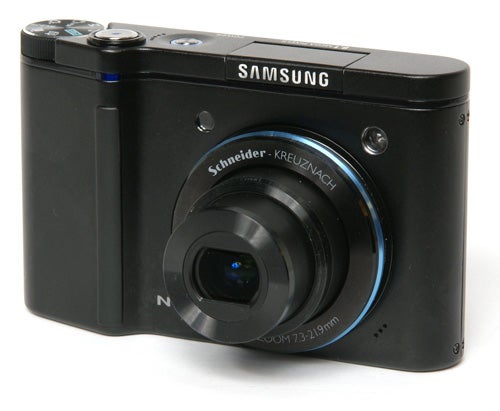
Verdict
Key Specifications
- Review Price: £130.00
Since Samsung introduced its premium NV (New Vision) range of high-spec digital compact cameras in the summer of 2006, the company’s fortunes in the digital camera market have dramatically improved, and looking at the NV8 it’s easy to see why. Launched in August last year alongside the similarly-styled 10-megapixel NV15 and 12-megapixel NV20, the NV8 is a very stylish 8-megapixel pocket compact camera featuring a 3x zoom Schneider Kreuznach lens, a 2.5-inch 230k monitor and a wide range of options all operated by Samsung’s innovative Smart Touch control system.
The camera’s smart contemporary design is obviously an important selling point, but unlike a lot of fashion cameras it doesn’t sacrifice usability for style. The distinctive shape, which it shares with many other models in the NV range, is very easy to hold, with a large handgrip on the front with a rubberised insert for extra grip, and a protruding thumb grip on the back that also doubles as the strap lug. The camera’s body is all metal, and the matt black finish of my review sample proved to be very resistant to marks and scratches. While it is small and light, it feels solid and well made. The lens does protrude somewhat when deactivated, and the unusual shape of the body means that the NV8 isn’t the slimmest camera in the world, but it is by no means bulky and fits well into a pocket or handbag for a night out. The camera measures 96.5 x 60 x 27mm, but for some reason Samsung’s official website insists that it is actually 18.6mm thick, which it is if you don’t include the lens or the handgrip. What exactly is the point of this practice of measuring the camera at the thinnest point of the body? It’s like me saying I’m only five feet tall, if you don’t include my head and neck. It’s not fooling anyone, and is a completely irrelevant measurement for any practical purpose. For example, if you’re considering buying a camera pouch to protect your new NV8 and want to know if it will fit, you want to know how thick it is including the lens and the handgrip, not without. These features are not removable, and are undeniably part of the camera body, so surely it makes some sort of sense to include them in any measurement of that body?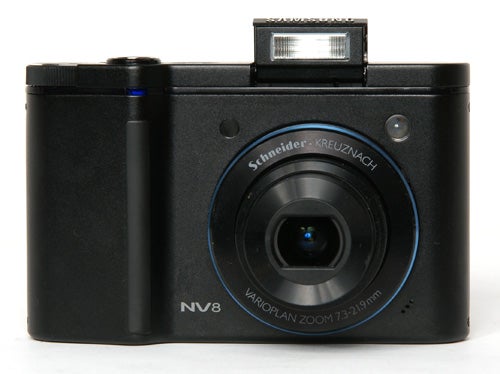
The NV8, including its lens and handgrip, is currently selling for around £130, which is a very good price for its specification. Considering its unusual features and design it’s difficult to find a close comparison, but the Nikon Coolpix S210 is around £150, the Canon Powershot A580 is around £140, the Olympus FE-280 is £130, while the Fuji F40fd is now selling for under £110.
The most obvious feature of the NV8’s design is the Smart Touch control system, which replaces the usual menu and D-pad arrangement with two rows of featureless black buttons below and the the right of the monitor screen. At first glance these might look a bit daunting, but once you’ve been shown how they work you’ll wonder why nobody came up with this idea before. When the camera is switched on, there are two rows of icons on the screen corresponding to these buttons, covering such options as focus mode, flash mode, image size and quality, ISO setting, white balance etcetera, basically all the things that would normally be found on a camera’s menu. Pressing the button corresponding to any of these icons brings up a row or column of possible settings on the screen, and to select one of them you simply press the button on the other row corresponding to the setting you want. For variable settings, such as shutter speed or exposure compensation, stroking your finger across the row of buttons moves a pointer on a sliding scale. It might sound complicated but it really isn’t, and in practice it means that you can change any camera setting with two button presses. Once you get used to it it’s much quicker and easier to understand than a conventional menu system.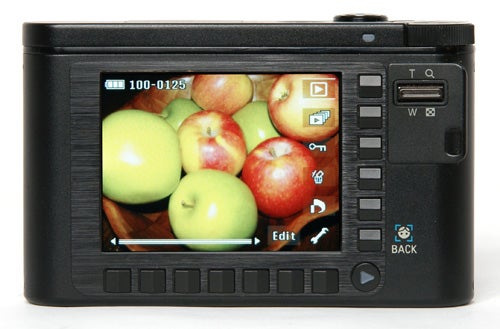
With such a comprehensive control system, the NV8’s many other features are easy to use, and there are plenty of them. It is one of the few compact cameras to include manual exposure control. Shutter speeds from 15 seconds to 1/1500th of a second can be selected, although the aperture control is limited to minimum or maximum settings only. The main mode dial on the camera’s top plate include an Effects setting, and it is here that the NV8’s more unusual features are found, including a multi-image composite mode, superimposed picture frames, and a unique animated GIF mode, which can make short stop-motion animations out of a sequence of shots and record them in the ultra-compact GIF format, ideal for sending in emails or posting on the internet.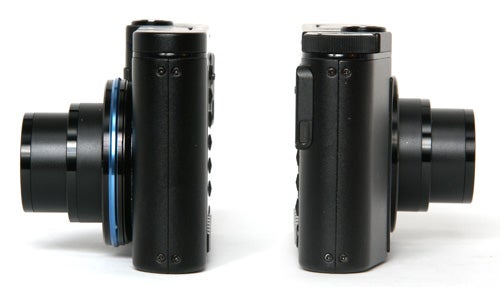
The NV8 includes a feature called Advanced Shake Reduction, which is an image stabilisation mode. It combines electronic shake reduction with a slight increase in ISO speed to reduce the effects of camera shake. It does work, and can produce stable hand-held shots at shutter speeds as low as 1/10th of a second, but it isn’t as good as a mechanical IS system. The resulting images do look a bit over-processed, and shooting speeds in this mode are significantly slower than in the standard shooting modes.
Overall performance is extremely good. The camera starts up very quickly in just over 1.5 seconds, and shuts down again even more quickly. Shooting speed is fast as well, with a shot-to-shot time in single shot mode of just over 1.5 seconds per frame. In standard continuous shooting mode this speeds up to 1.2 seconds per shot, but in this mode the camera checks focus before every frame. There is also a high-speed burst mode that shoots three frames in approximately 1.5 seconds, and a motion capture mode that shoots 20 frames at 7fps, but only at 1024 x 768 resolution. The autofocus system is both versatile and fast, finding focus in well under half a second, although it slows down a little and can sometimes hunt around at telephoto settings. Low light performance is excellent though, focusing quickly even in very low light, and the AF assist lamp means it can focus in total darkness at a range of a couple of metres. Flash range, exposure and coverage is also very good, with a quick flash recharge time of about four seconds.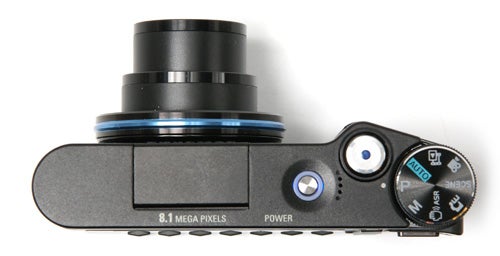
Image quality is also much better than one might expect from such a low priced camera. The excellent f/2.8-5.6 Schneider Kreuznach lens takes a lot of the credit, providing a very high level of sharp detail and outstanding corner sharpness. It does exhibit some barrel distortion at the wide-angle end of the zoom range, but this disappears at at even slightly longer settings, and there isn’t a trace of pincushion distortion at the telephoto end. The NV8 has a larger 1/1.75-inch sensor, and as a result contrast, dynamic range and colour reproduction are all first rate. However even with this larger sensor the camera does have some problems with image noise. The noise reduction system is quite heavy-handed, smudging fine detail in shadow areas even at 200 ISO, but even so it can’t prevent mid-tone colour noise occurring at all ISO settings from 200 upwards, and predictably the 1600 and 3200 ISO settings produce very poor image quality. Nonetheless, the NV8 reliably produces very good photos in most circumstances, and is especially good for casual social photography, where the excellent low-light focusing and flash performance are a big advantage.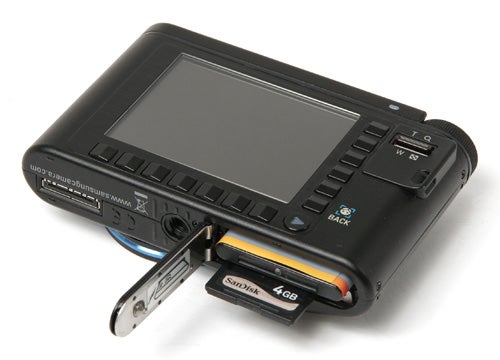
”’Verdict”’
For what is practically a budget price the Samsung NV8 provides a level of quality on a par with premium-range cameras from any of the other manufacturers. It has a lot of style, excellent build quality, fast performance and a range of useful and entertaining features, made more accessible by the clever Smart Touch control system. It lacks a little in the picture quality department due to its image noise problems, but makes up for this somewhat with good low-light performance.
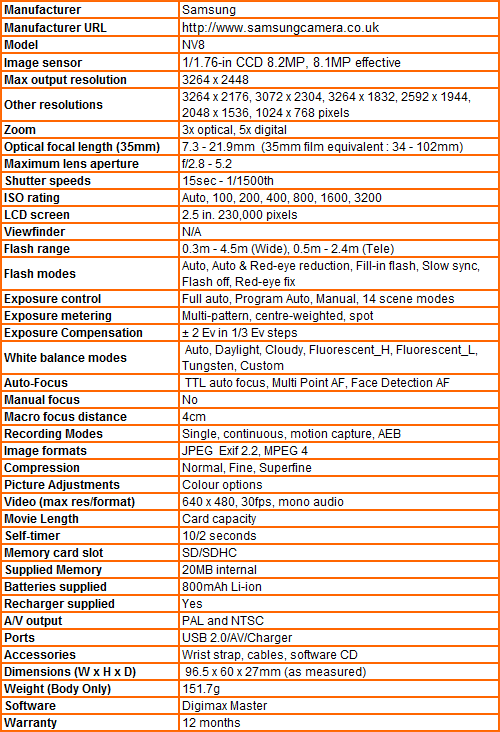
”A range of test shots are shown over the next few pages. Here, the full size images at the minimum and maximum ISO settings have been reduced for bandwidth purposes to let you see the full image, and a series of crops taken from original full resolution images at a range of ISO settings have been included in order for you to gain an appreciation of the overall quality.”
—-
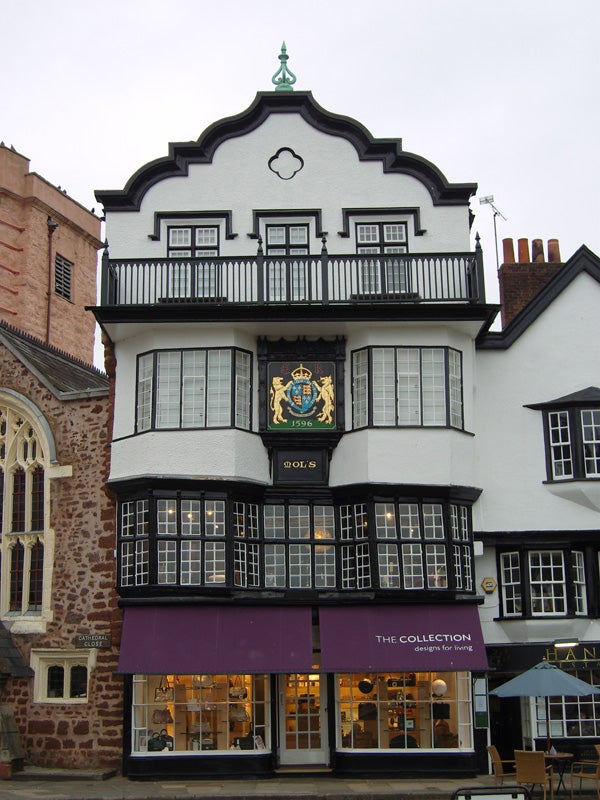
This is the full frame at 100 ISO.
—-
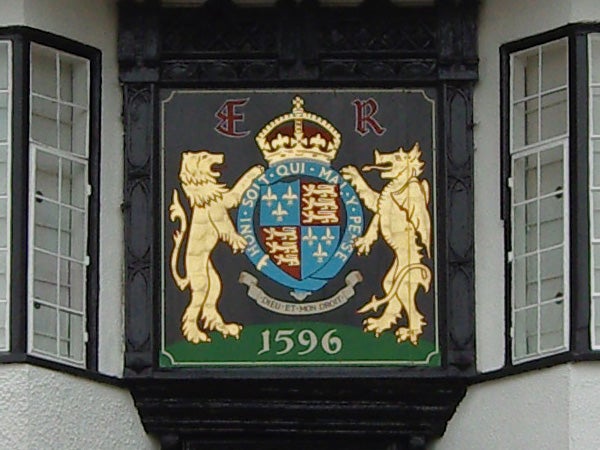
Image quality at the minimum setting is very good, with plenty of sharp detail.
—-
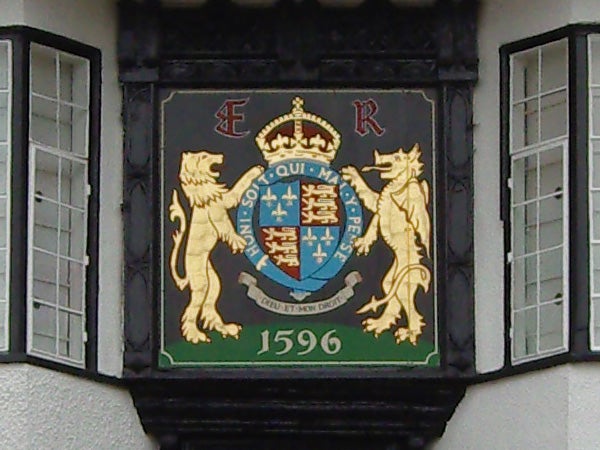
Even at 200 ISO there is colour mottling in the darker mid-tome areas, and some shadow detail has been lost to noise reduction.
—-
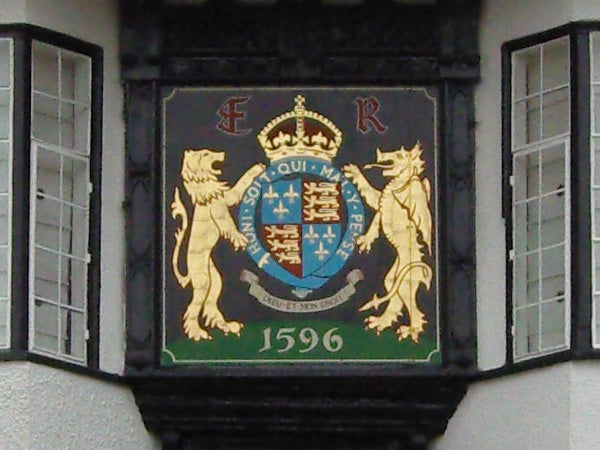
The noise is progressively worse at 400 ISO.
—-
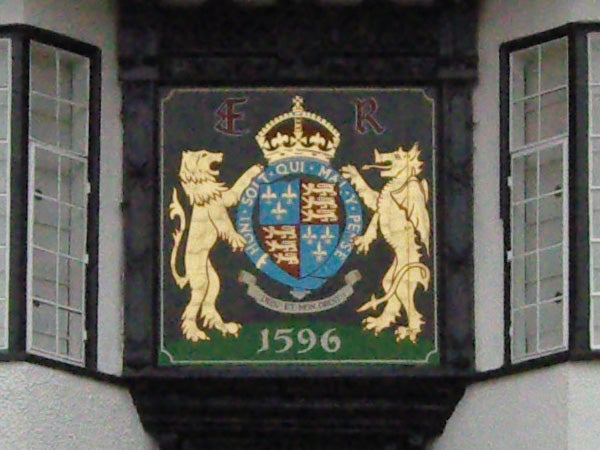
At 800 ISO most fine detail has been lost and the image quality is quite poor.
—-
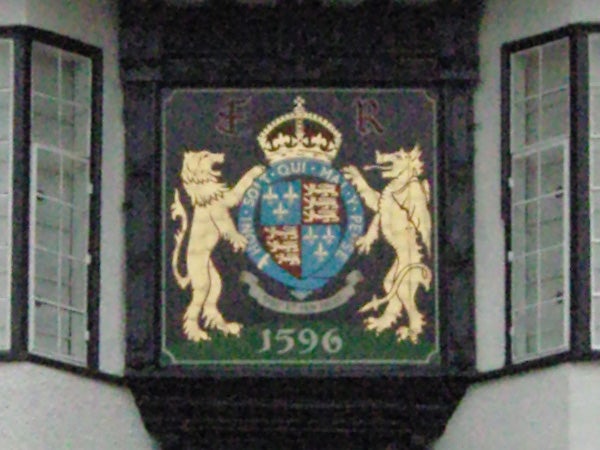
Image quality takes a nose-dive at 1600 ISO.
—-
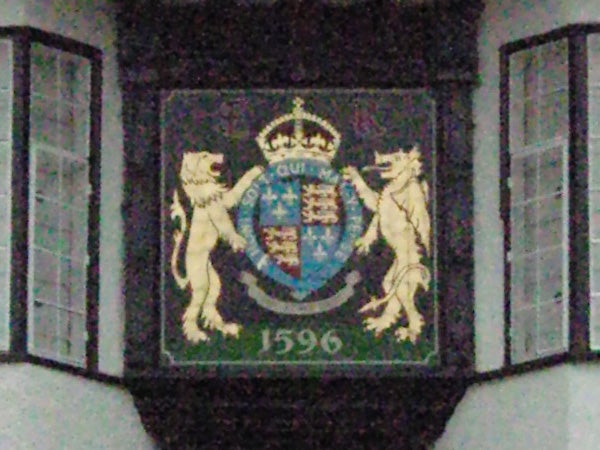
As usual the 3200 ISO setting is all but useless.
—-
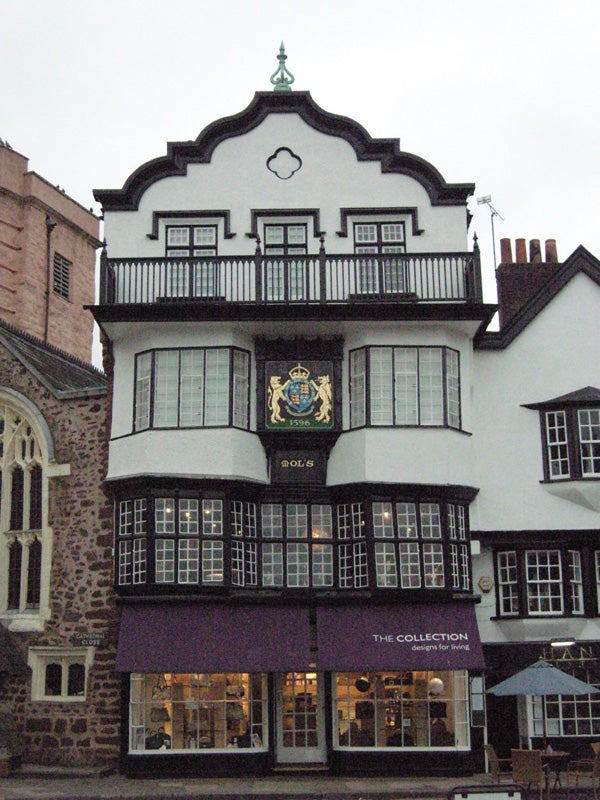
This is the full frame at 3200 ISO.
—-
”A range of general test shots are shown over the next two pages. In some cases, the full size image has been reduced for bandwidth purposes, and a crop taken from the original full resolution image has been placed below it to show the overall image quality. Some other pictures may be clicked to view the original full-size image.”
—-
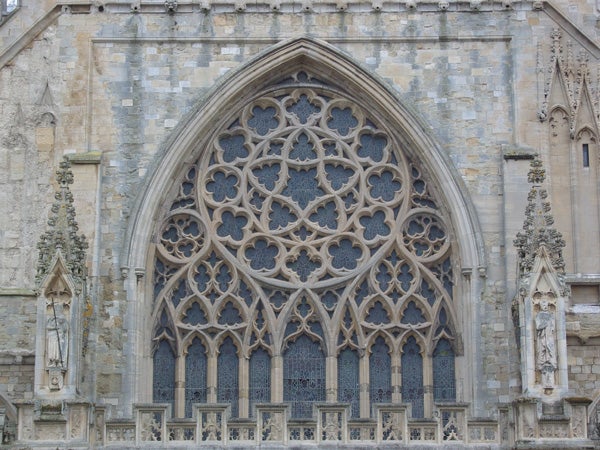
Here’s the usual detail test shot of the West Window of Exeter Cathedral, for you to compare with other cameras. See below for a full res crop, or click to see the whole picture.
—-
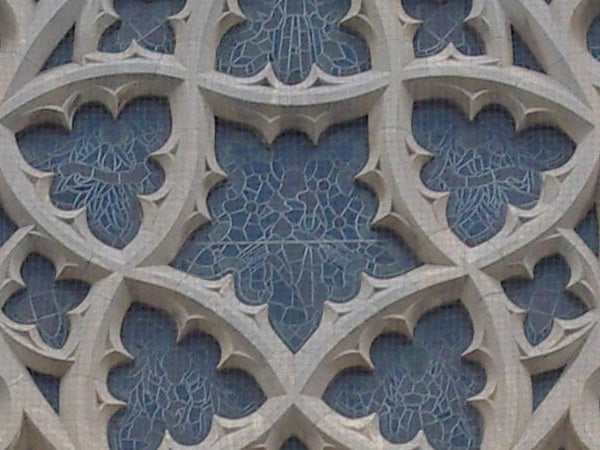
The level of detail is about average for an 8MP camera. It would have looked better on a less overcast day.
—-

The lens does produce some barrel distortion at wide angle.
—-
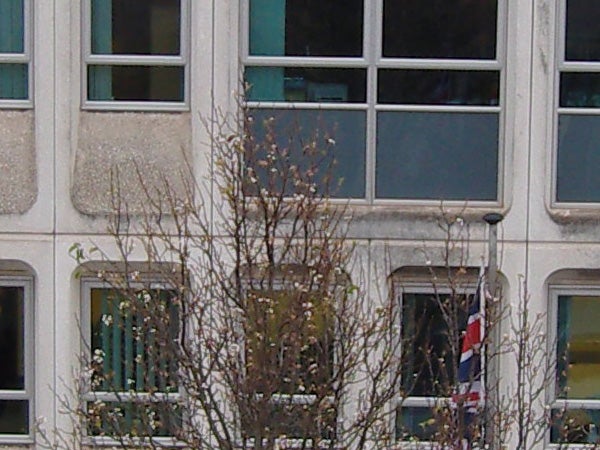
In this crop from the image above, centre sharpness is very good.
—-
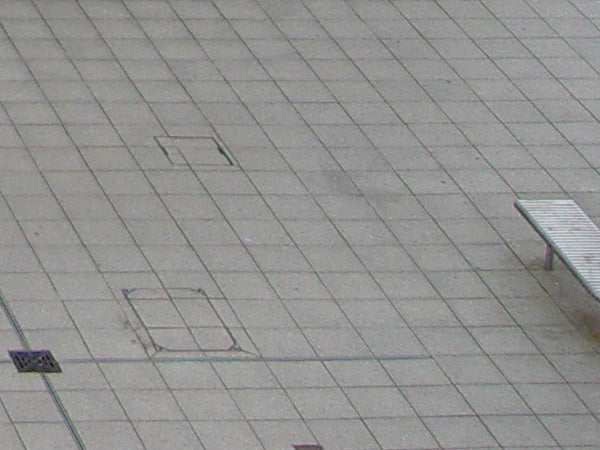
The Schneider Kreuznach lens produces excellent corner sharpness.
—-
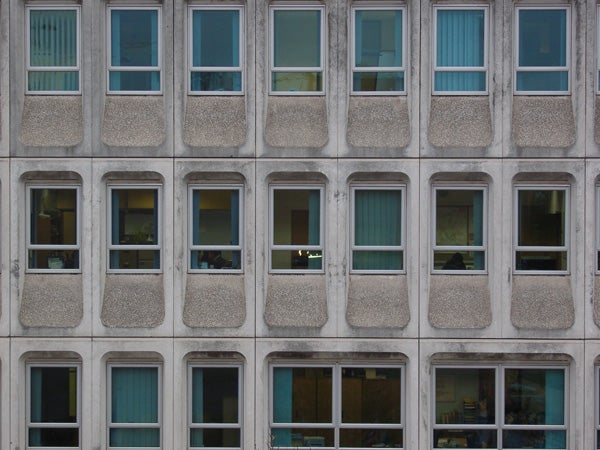
The same building, but at the telephoto end of the zoom range. There is no trace of pincushion distortion.
—-
”A range of general test shots are shown over the next two pages. In some cases, the full size image has been reduced for bandwidth purposes, and a crop taken from the original full resolution image has been placed below it to show the overall image quality. Some other pictures may be clicked to view the original full-size image.”
—-
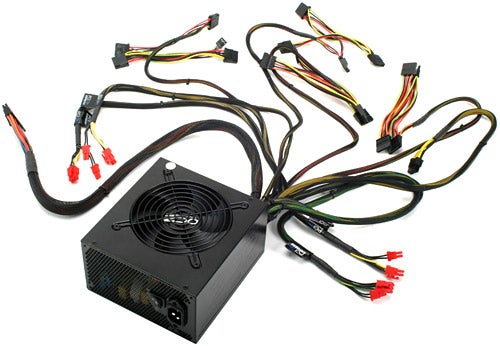
The wide-angle end of the zoom is equivalent to 34mm, slightly wider than average.
—-
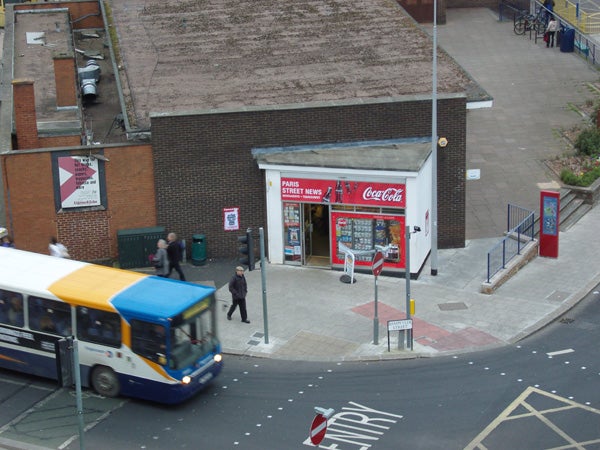
The telephoto end is equivalent to 102mm, good enough for a portrait shot but not much use for birdwatching.
—-

Flash range, metering and frame coverage are very good.
—-
Trusted Score
Score in detail
-
Value 9
-
Image Quality 7
Features
| Camera type | Digital Compact |
| Megapixels (Megapixel) | 8.1 Megapixel |
| Optical Zoom (Times) | 3x |

